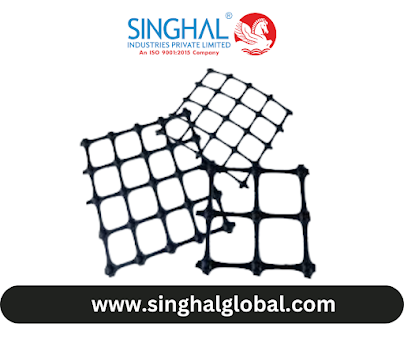Everything You Need to Know About Geomembranes
Geomembranes are a type of impermeable membrane made from recycled plastic that is often used in projects such as water treatment, landfills, and pond liners. They provide excellent containment and protection while remaining strong, flexible, and durable. Find out how geomembranes work, their benefits over other materials, and more!
What are Geomembranes?
Geomembranes are waterproof membranes made from recycled plastic, rubber, or other synthetic materials. They provide excellent protection for various projects and can be customized in size, shape, and thickness to fit the specific needs of the project. Geomembranes are also highly resistant to chemicals and UV radiation, making them ideal for a range of applications including water treatment, irrigation, landfill containment, and pond liners.
When installing geomembranes, it's important to ensure a secure and airtight seal. This can be achieved through the use of patches, welds, and geotextiles. Furthermore, installation should be done carefully and professionally in order to maximize the performance and longevity of the membrane. In addition, geomembranes are lightweight and easy to transport, making them ideal for large-scale projects. Furthermore, due to their high strength-to-weight ratio, geomembranes require less material than other waterproofing materials such as concrete or asphalt. This makes them a more cost-effective solution in many cases.
Types of Geomembranes
The most common type of geomembranes are polyethylene, PVC, and EPDM. Polyethylene is a strong and flexible material that is resistant to punctures and strain. Its low-cost makes it an attractive option for a variety of projects. PVC is the most economical choice and can be manufactured in a variety of shapes, sizes, and thicknesses. EPDM is an elastomeric material with superior strength and resistance to chemicals, making it ideal for applications such as irrigation water retention or as liners for landfills or lakes.
It is important to select the right membrane material for your specific application, as there are a variety of factors to consider such as soil moisture content and water levels. Geomembrane systems can be designed either with homogenous materials or with multiple layers. Homogenous membranes possess the same physical properties throughout their entire thickness, making them easy to install. Multi-layer systems are constructed using specially blended membranes that provide features such as puncture resistance and accelerated draining capabilities. Taking these characteristics into consideration when selecting geomembranes will ensure that you make an informed decision on the best option for your project.
Benefits of Using Geomembranes
Geomembranes have a number of advantages over other materials. They are resistant to punctures, are able to hold up against aggressive chemicals, have excellent flexibility under pressure, and can be installed quickly. In addition, they offer reduced seepage and evaporation of stored Chemicals or liquids because they provide an impermeable barrier that prevents the leakage of hazardous substances into the environment.
Geomembranes are also very cost-effective. Compared to other materials, they require fewer resources to install, as most can be laid in place on a prepared surface. Additionally, geomembranes offer protection against root intrusion and other physical degradation throughout their serviceable life. They are often used as part of the foundation for structures that must contain high volumes of water or chemicals due to their high tensile strength and low permeability, making them an excellent option for environmental containment projects.
Applications of Geomembranes
Geomembranes are widely used in a variety of applications. Some of the most common uses include waste containment, secondary containment, leakage detection, below-grade waterproofing, tunnel and bridge waterproofing, remediation liners, and erosion control. In addition to serving as protective liners for groundwater contamination sites, geomembranes are also used for the storage of potable water supplies and agricultural irrigation liquids.
Many industries rely on geomembranes for their projects. In the construction field, geomembrane liners are commonly incorporated into structural components such as underground tanks and dams to resist pressure from the water, air, and other forces. The liners are also used by many oil and gas companies to help prevent the leaching of hazardous hydrocarbons into the environment. The distribution of geomembranes in landfills is also commonplace due to their capability of preventing environmental toxic waste generated by industry. Geomembranes are essential for helping to protect our resources and environment.
Preparation and Installation of Geomembrane Liners
Preparing and installing a geomembrane liner is critical to its performance, so attention to detail is key. The surface beneath the geomembrane must be carefully leveled, graded, and compacted for proper drainage. All substrate materials should be inspected for defects prior to the application of the geomembrane. Professional installation is highly recommended as an improperly placed geomembrane can lead to costly problems in later years.
After all the substrate material is inspected, spread the geomembrane as per design specifications and secure it in place. Anchor the geomembrane by placing a specified quantity of ground cover elements beneath each section of membrane: sand-filled bags and/or specific copper spikes. Cover the entire width of each panel plus an additional two feet on either side, anchoring the panel securely at both ends and in between. To ensure airtight seals along seams, use a seaming tool to reheat and press together attached panels of geomembrane liner with double-sided tape applied to non-jointed areas. Finally, perform quality control checks according to inspection protocols and record installation details for future reference.


.png)
Comments
Post a Comment